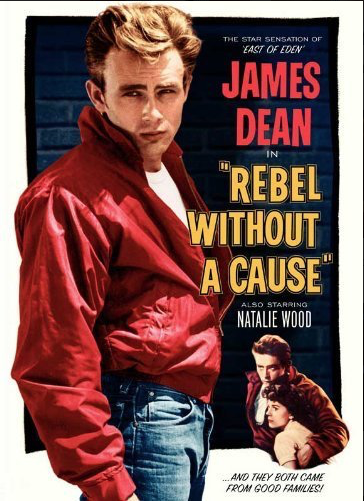It begins with three wayward teenagers finding themselves at a police station for various misdemeanors. One is a boy who has problems with fitting in and has been arrested for public drunkenness. One is a young woman cutting curfew, desperate to attract attention from her father and a victim of peer pressure. The final boy is arrested for killing a litter of puppies, his way of lashing out to try and deal with a near-absent mother and father who abandoned him. All three of these characters will interact, connect and explore the differences of generational angst.
Winthrop’s Art History Association (AHA) hosted an event for a showing of the 1955 film “Rebel Without A Cause” Sept. 25, followed by a discussion with Art History Professor Laura Dufresne. In keeping with the AHA Film Festival’s theme this semester, the film paints a picture of teenage angst. The film, directed by Nicholas Ray, offers a critical look at the social decay on portraying delinquents, parental norms and commentary of teenagers during 1950s America. Critics have praised “Rebel Without A Cause” due to its talented cast of stars, including James Dean, Sal Mineo and Natalie Wood, as well as its portrayal of growing up and finding camaraderie within the struggles of coming of age. The film was released a month after its star, James Dean, passed away in an automobile accident at the age of 24.
Dean was a notorious method actor and teenage heartthrob. In this film he appears as Jim Stark, a teenager who, not only has a difficult time fitting in due to his parents’ constant moving, but also has frustration with his parents’ bickering. Through a single day and night in Los Angeles, he encounters a lovely woman named Judy (Natalie Wood), who usually spends time with her delinquent friends, and he befriends a lonely, yet loyal, young boy named Plato (Sal Mineo). The three find a familial bond in dealing with their shared frustrations of home life. When a seemingly harmless race leads to an accidental death of one of their peers, the main characters find themselves wrapped up in suspenseful chases and rapid bonding, all leading to a climatic stand-off at the iconic Griffith Observatory.
One of the interesting conflicts in the film is Jim’s struggle with his parents and how he perceives his father, Frank. He is frustrated by his father’s timid personality and his reluctance to stand up to his domineering wife. This creates a unique angle from which to view gender roles in the 1950s and plays with our usual perception of cultural norms even today. It also leads way to one of the film’s poignant and well-known lines at the beginning when Jim yells at his parents, “You’re tearing me apart!” This conflict helps create a sense of uniqueness in how Jim attempts to convey his emotions to his parents and how he wants them to act.
Although there are instances of cultural stereotypes of the era, like the mammy archetypes in Plato’s family maid, “Rebel Without A Cause” is an interesting portrayal of adolescents and social reflection of the 1950s with the help of youthful actors. Their powerful performances help to present genuine emotion and garner an appreciation to a rare look at the differences between generations in a time we stereotype as “the good old days.”




